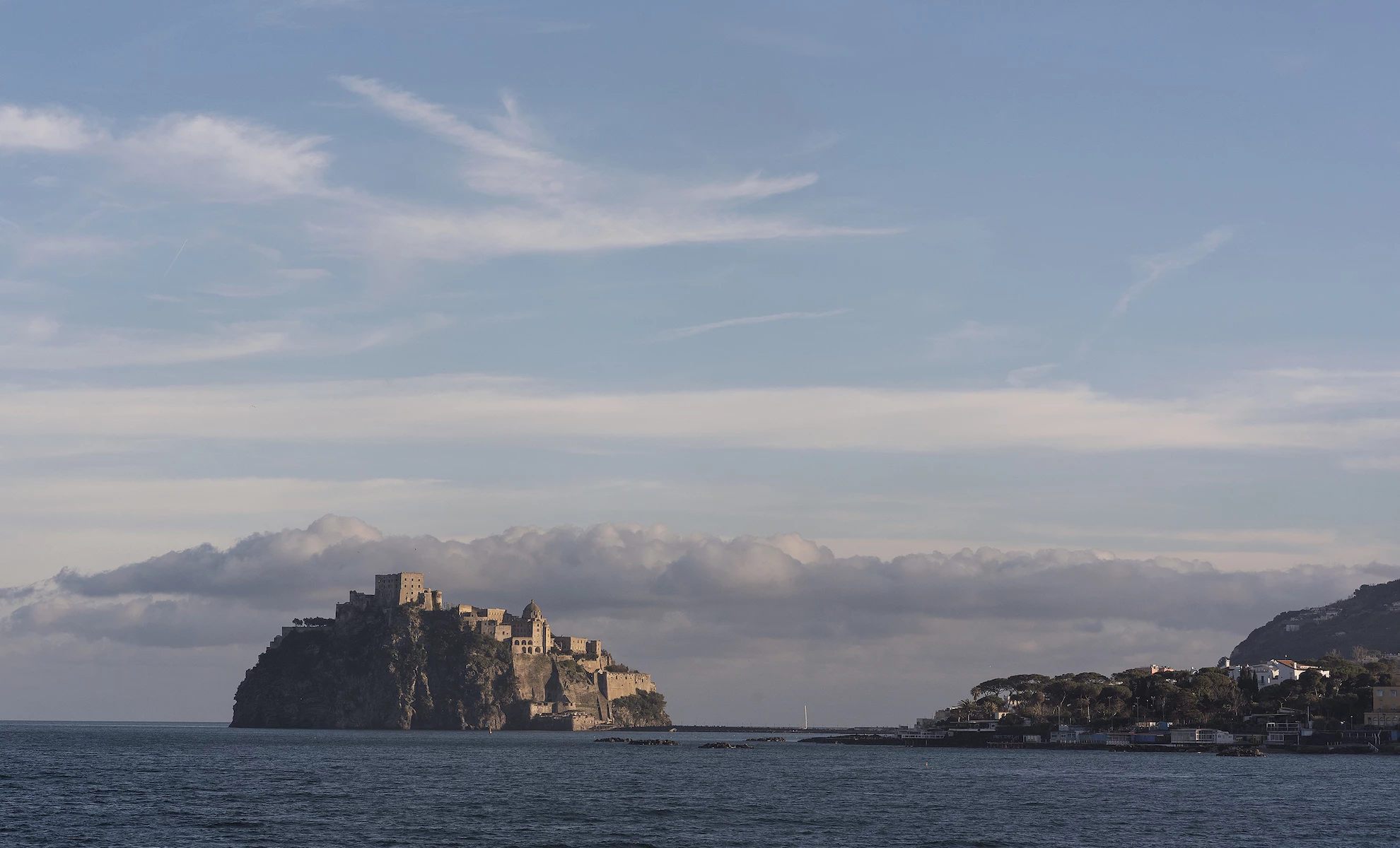An islet on the island. The Aragonese Castle of Ischia is one of the most fascinating corners of the whole Gulf of Naples, rich in historical and natural testimonies.
Ph. Anna Monaco - Trentaremi
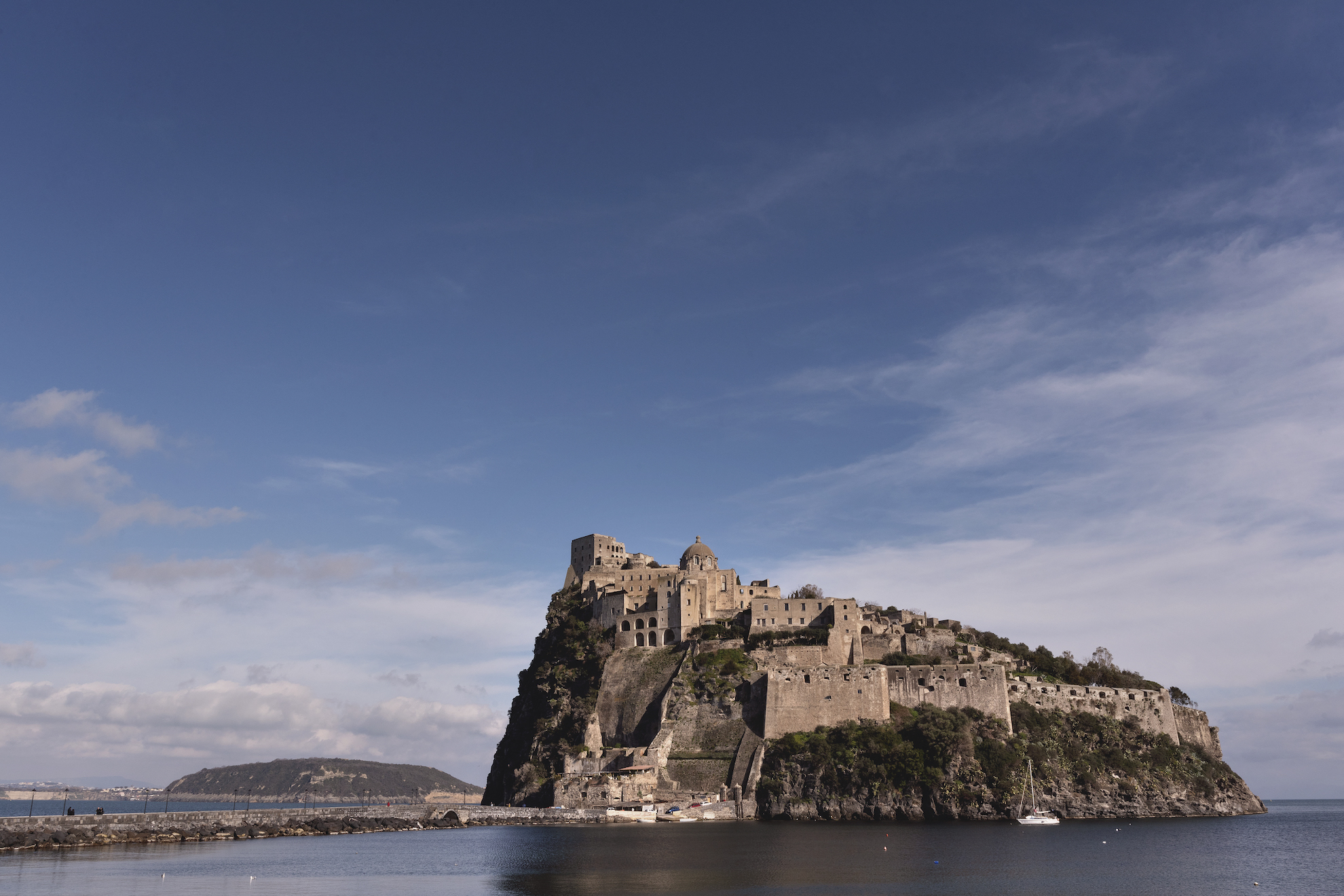
It stands on a rocky islet embraced by the sea, connected by a stonework bridge to the Cartaromana Bay on the east side of Ischia. Among the old fishermen who still sail the waters of the bay today, someone loves to repeat: “You cannot say you know Ischia if you did not visit the Aragonese Castle”. It is true, because this islet, born from the magma of submarine volcanoes and dominated by the imposing profile of the fortress, has gone through centuries of Ischia history, until it became a symbol.
Ph. Anna Monaco - Trentaremi
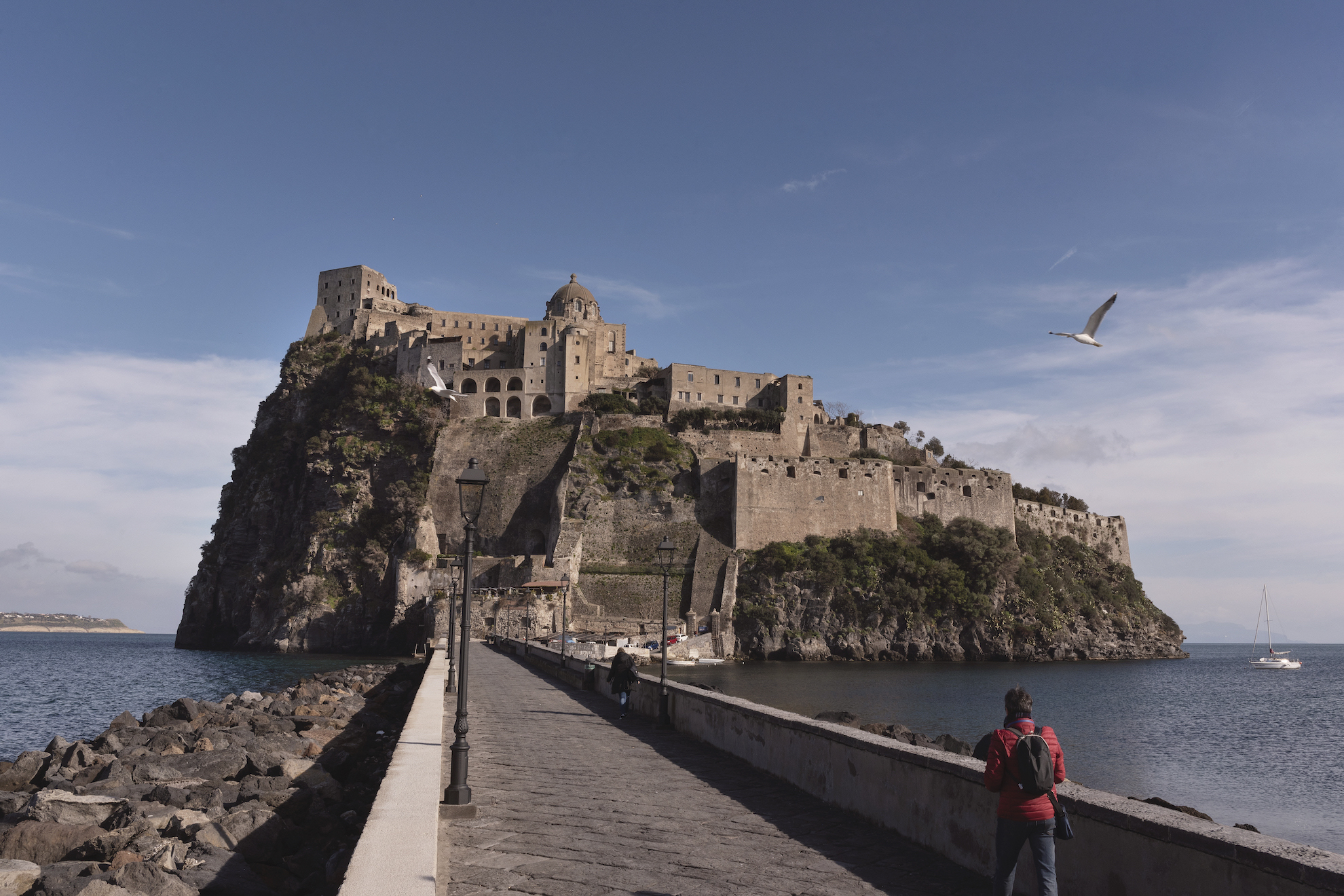
When this land was still called Pithecusa, the Greek Syracusan Gerone the first came to aid the Cumans during the war against the Tyrrhenians. For this reason he ordered the construction of the fortress in 474 BC, in a crucial place to prevent enemy attacks from the sea.
Since then, the building remained faithful to its vocation as a defensive fortress, even under the Angevins first (in 1300) and then the Aragonese, who gave it the name. Alfonso of Aragon, in 1441, was in fact the first to have the islet connected to Ischia via a bridge, giving the Castle the shapes that we can still admire today, despite the devastation of the Second World War, whose bombs did not spare even this piece of Paradise.
Ph. Anna Monaco - Trentaremi
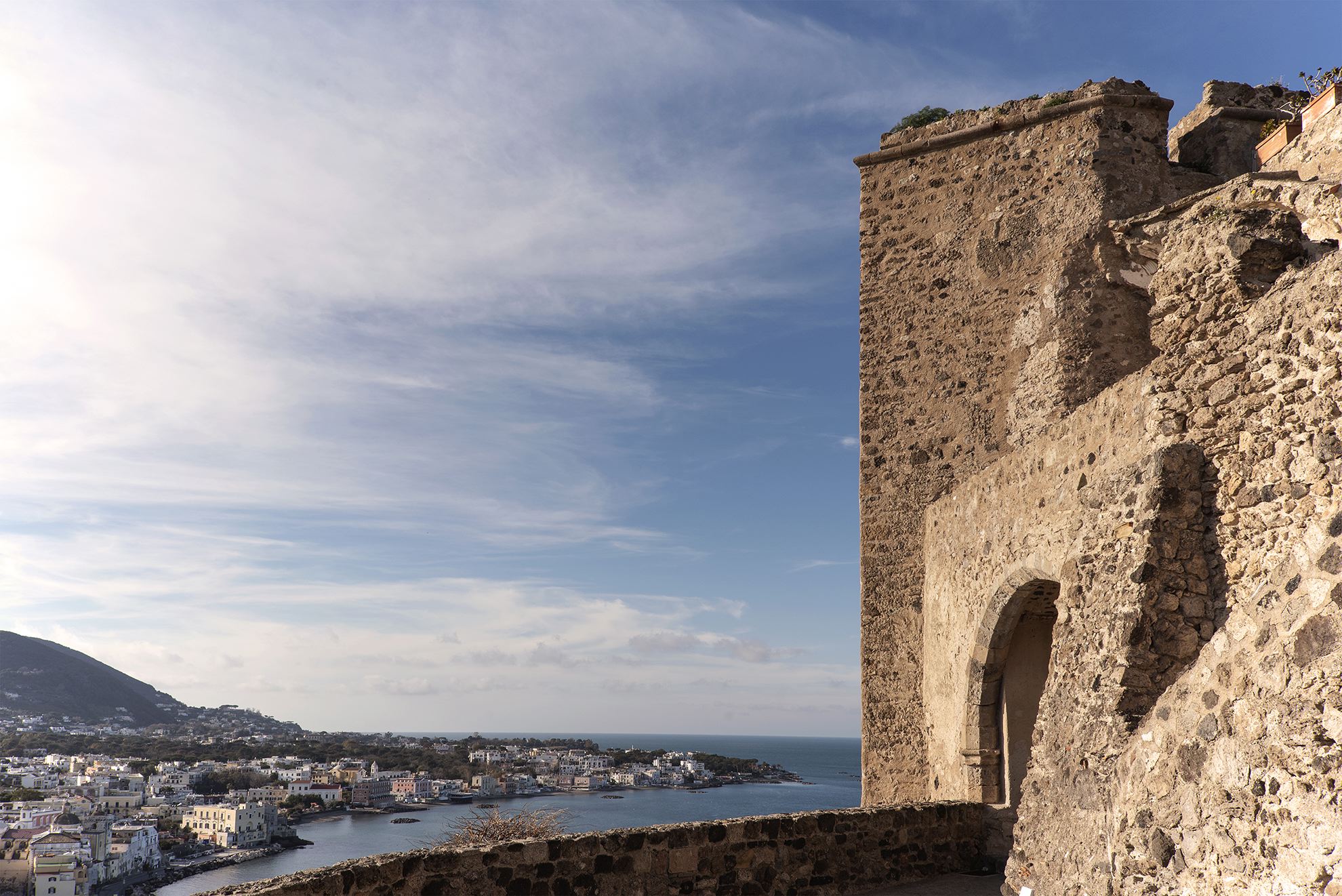
Over the years, the Castle became a real populated center with convents, abbeys, seminaries and princely residences, but also maintained the function of defensive fortress. In fact, the people of Ischia were often exposed to attacks by pirates coming from the sea, both a blessing and a curse for the island. Source of danger for external incursions, but at the same time an indispensable friend for those who live on fishing.
Ph. Anna Monaco - Trentaremi
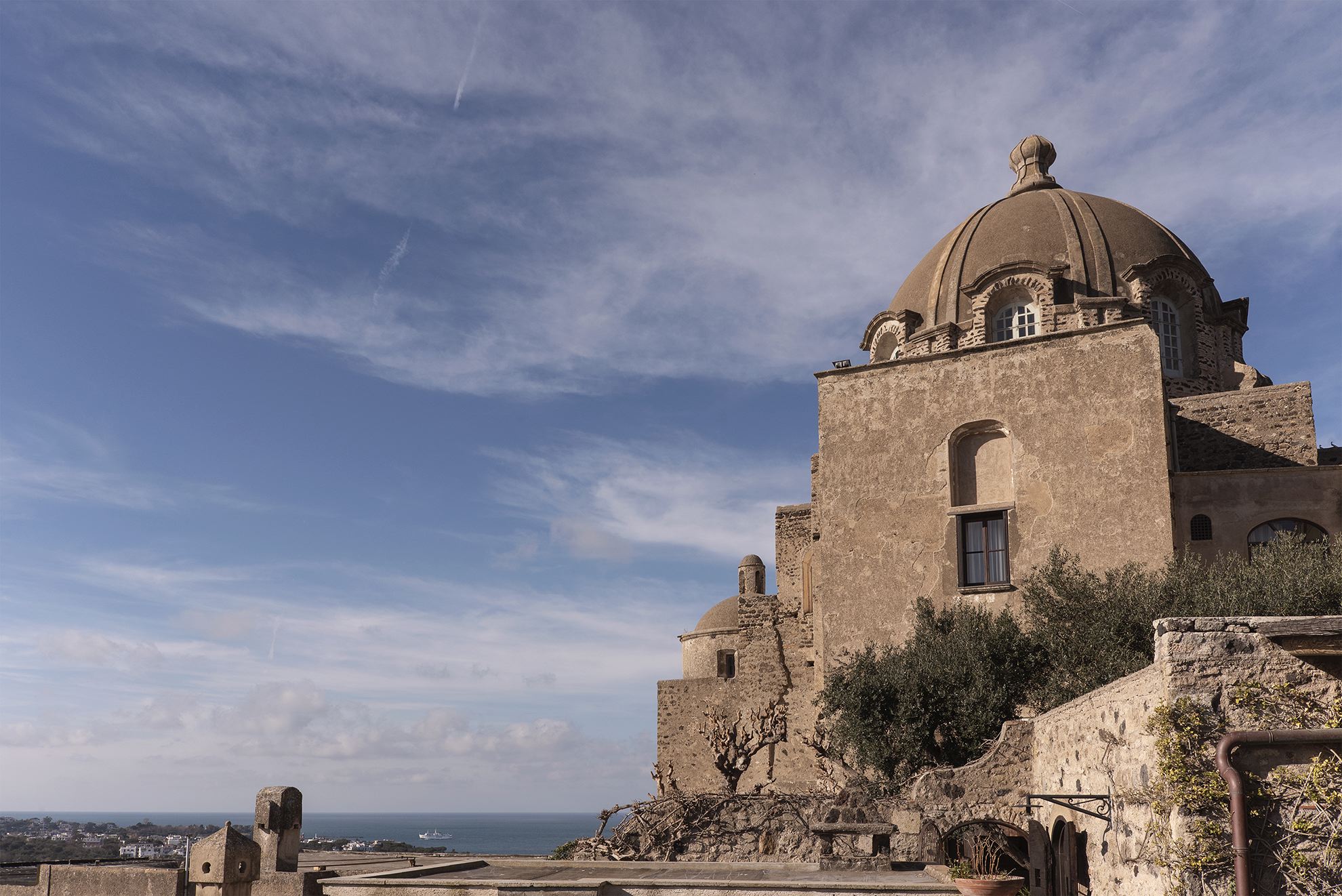
And precisely the sea, in the stretch that divides the islands of Ischia and Procida from the Phlegraean Fields, gives life and shape to a territory unique in the world, not only from the historical point of view, but also from the geological one. The Castle stands on a bubble of magma which solidified after several eruptions of the underwater volcanoes that stud the profile of the Phlegrean coast. A millenary geological stratification that seems to form a single block with the brick buildings on the top. A perfect balance between Nature and human being, fascinating at least as rare.
Ph. Anna Monaco - Trentaremi
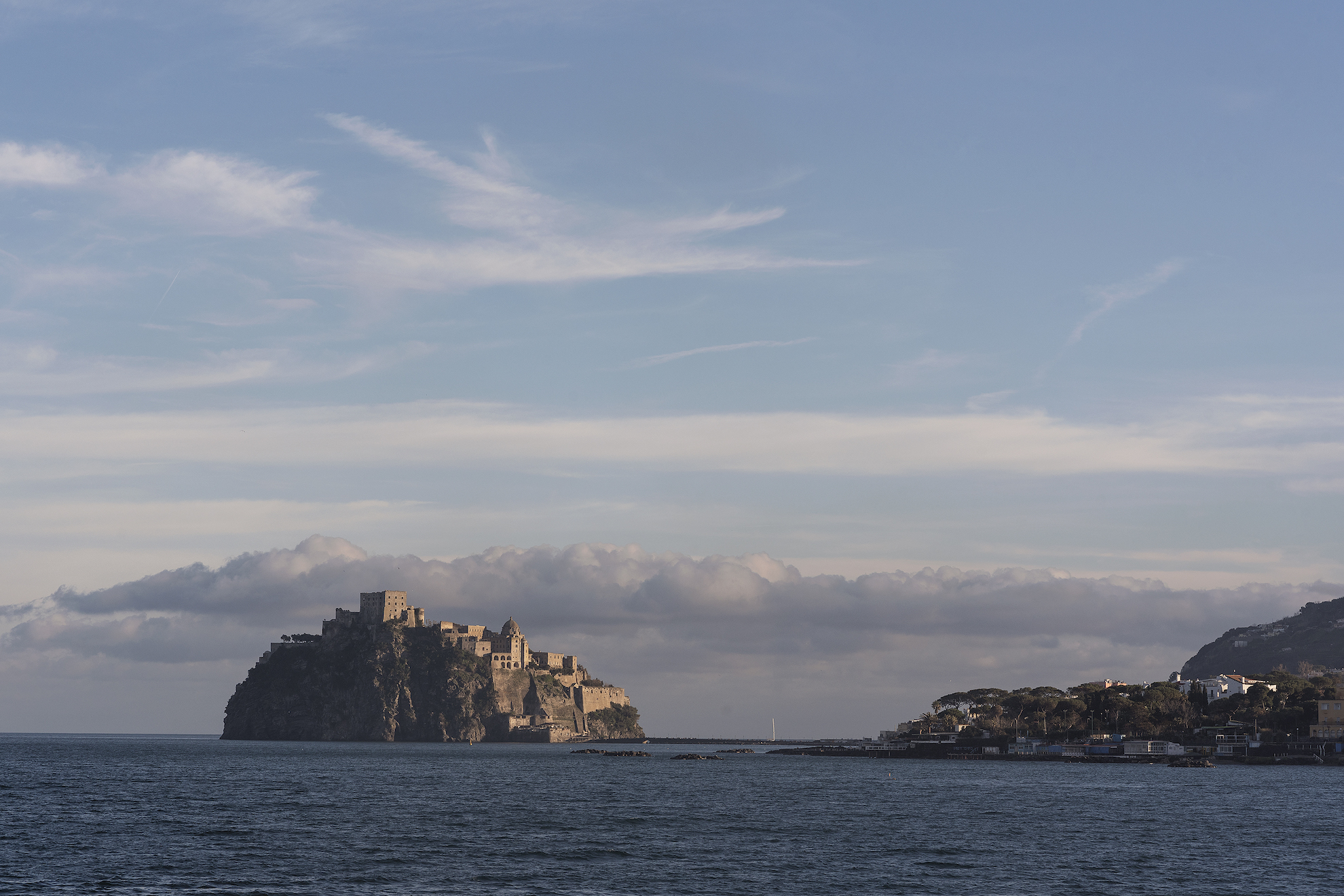
Marked by the unmistakable dome of the Church of the Immaculate Conception, the profile of the Castle then descends towards the Bay of Cartaromana, in a mirror of pure water with emerald green hints. Here Ischia expresses its intimate link with the sea. An island with an agricultural vocation, with large expanses of vineyards and orchards, here comes back to its ancient vocation of “mother” for sailors and fishermen, who mark their days in the shadow of the imposing majesty of the fortress.

